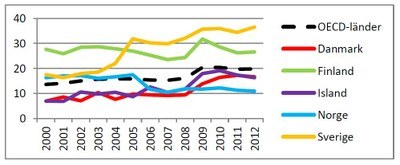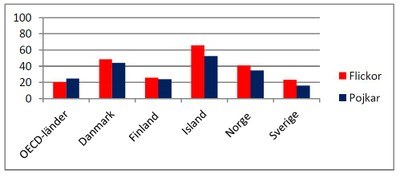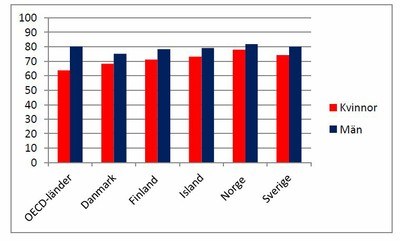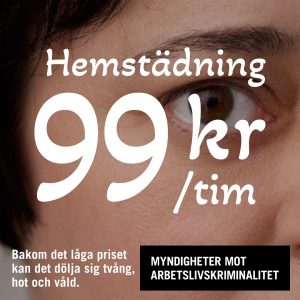A new Nordic report, ‘Youths in work in the Nordic region’, explores
the question in detail and looks at four different factors which might
explain the differences between the countries:
▪ The need for labour
▪ The structure of the education system
▪ The flexibility of workers’ rights
▪ Youths’ salary levels
Åsa Olli Segendorf, the report’s main author, concludes that
apprenticeships make a great difference to how many youths can be
classified as being employed. ILO’s statistics classify apprentices as
being employed, because they are being paid during their time in
training.
In Denmark nearly one in four employed youths is an apprentice, in
Iceland and Norway the figure is nearly ten percent while in Sweden the
number is negligible. Yet the differences in apprentice systems cannot
fully explain the different unemployment levels.
Media often quote numbers which show Sweden and Finland having the
highest level of youth unemployment. The difference is greatest among
the youngest age group; 15–19 year olds:

Unemployment 15-19 year olds. Source: AKU, OECD
Yet comparing an older group of youths – 25–29 year olds – throws up
much lower unemployment figures. At the same time it is considerably
higher in Denmark, while Sweden and Finland’s figures are lower than
the OECD average. The 2008 economic crisis can be seen clearly in the
statistics for Denmark and Iceland. Norway still enjoys very low
unemployment:

Unemployment 25-29 year olds. Source: AKU, OECD
If you look at employment rather than unemployment, it is higher for
15–19 year olds in the Nordic countries compared to the rest of the
OECD. Another difference is the higher number of girls who work
compared to boys from that age group, which is not the case elsewhere
in the OECD:

Employment rate 15-19 year olds 2012. Source: AKU, OECD
Iceland stands out with a very high number of 15–19 year olds
working part time while studying.
Looking at the older age group of 25–29 year olds, the differences
even out, while men work more than women:

Employment rate for 25–29 year old women and men, 2012
The report says Sweden has the least flexible workers’ rights for
young people. The wage distribution is also narrowest in
Sweden.
Young workers are at a disadvantage compared to middle aged workers
in the labour market because they have less experience and are
therefore often less productive.
“If you don’t compensate for the difference in productivity by
lowering starting salaries for young people, you might end up with a
higher relative youth unemployment because employers’ wage costs
increase,” writes Åsa Olli Segendorf.
It is nearly impossible to find statistics for the youths’ general
salary level, because the minimum wage – which is most often what young
people are being offered – is agreed on after negotiations between
employers and trade unions, rather than being introduced through
legislation like in most other European countries.
A 2011 Nordic survey of workers in the service and retail industry
does, however, throw up rather large differences between the countries,
especially for Iceland.
| Country | Minimum wage |
|---|---|
| Denmark | 18,946 |
| Finland | 15,888 |
| Iceland | 10,715 |
| Norway | 21,026 |
| Sweden | 17,325 |
Minimum wage in SEK after purchasing power parity
adjustment
The report does not give a final answer to why there are differences
in youth unemployment between the countries.
“But possible explanations include institutional differences in
education systems leading to different levels of labour market
attachment, differences in the flexibility of workers’ rights,
differences in minimum wages and the fact that the different countries
have different needs for labour,” writes Åsa Olli Segendorf.





